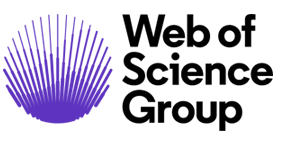Performance Index Model of Raw Water Infrastructure
Downloads
Doi:10.28991/CEJ-2024-010-06-014
Full Text:PDF
Downloads
[2] Raihan, A., Pereira, J. J., Begum, R. A., & Rasiah, R. (2023). The economic impact of water supply disruption from the Selangor River, Malaysia. Blue-Green Systems, 5(2), 102–120. doi:10.2166/bgs.2023.031.
[3] Molinos-Senante, M., Maziotis, A., Sala-Garrido, R., & Mocholi-Arce, M. (2023). Assesing the influence of environmental variables on the performance of water companies: An efficiency analysis tree approach. Expert Systems with Applications, 212, 118844. doi:10.1016/j.eswa.2022.118844.
[4] Ibrahim, A., Ismail, A., Juahir, H., Iliyasu, A. B., Wailare, B. T., Mukhtar, M., & Aminu, H. (2023). Water quality modelling using principal component analysis and artificial neural network. Marine Pollution Bulletin, 187. doi:10.1016/j.marpolbul.2022.114493.
[5] Odwori, E. O. (2022). Adapting Strategies for Water Supply Management to Climate Change in Nzoia River Basin, Kenya. Asian Journal of Environment & Ecology, 24–52. doi:10.9734/ajee/2022/v18i130304.
[6] Yousefi, P., Shabani, S., Mohammadi, H., & Naser, G. (2017). Gene Expression Programing in Long Term Water Demand Forecasts Using Wavelet Decomposition. Procedia Engineering, 186, 544–550. doi:10.1016/j.proeng.2017.03.268.
[7] Nasution, A., Helard, D., & Indah, S. (2021). Kajian Kinerja Pengelolaan Sistem Penyediaan Air Minum (SPAM) di Kabupaten Solok dan Kota Solok Berbasis Buku Kinerja Badan Peningkatan Penyelenggaraan Sistem Penyediaan Air Minum. Cived, 8(3), 213. doi:10.24036/cived.v8i3.115792.
[8] Suprayitno, M., Kusumastuti, D. I., & Wahono, E. P. (2021). Evaluasi kinerja PDAM Tirta Jasa di Kabupaten Lampung Selatan. REKAYASA: Jurnal Ilmiah Fakultas Teknik Universitas Lampung, 25(2), 36–41. doi:10.23960/rekrjits.v25i2.39.
[9] Suprayogi, H., Bisri, M., Limantara, L. M., & Andawayanti, U. (2018). Service index modeling of urban drainage network. International Journal of GEOMATE, 15(50), 95–100. doi:10.21660/2018.50.04204.
[10] Susilo, H., Purwantoro, D., & Rahadiansyah, S. (2021). Model Performance Index of Ground Water Irrigation Systems in the Karst Mountain Region: Case Study in Gunung Kidul Regency, Yogyakarta. IOP Conference Series: Earth and Environmental Science, 641(1), 012014. doi:10.1088/1755-1315/641/1/012014.
[11] Noviadriana, D., Andawayanti, U., Juwono, P. T., & Sisinggih, D. (2019). Service index indicator of polder system with retention pond using PCA method. International Journal of Recent Technology and Engineering, 8(3), 7577–7583. doi:10.35940/ijrte.C6159.098319.
[12] Kurniawan, T., Bisri, M., Juwono, P. T., Suhartanto, E., Tohari, A., & Riandasenya, S. A. R. (2022). Performance Index Model of River and Infrastructure. Journal of Hunan University Natural Sciences, 49(2), 111–122. doi:10.55463/issn.1674-2974.49.2.11.
[13] Purwantoro, D., Limantara, L. M., Soetopo, W., & Solichin, M. (2020). Sabo Dam Infrastructure System Performance Index Model in Mount Merapi. Technology Reports of Kansai University, 62(10), 6151–6164.
[14] Bakti, L. M., Juwono, P. T., Dermawan, V., Wijatmiko, I., Kurniawan, T., & Tohari, A. (2023). Irrigation Performance Index Model (Case Study in IPDMIP). Journal of Hunan University Natural Sciences, 50(4), 1-11. doi:10.55463/issn.1674-2974.50.4.1.
[15] Liu, B., Mohandes, M., Nuha, H., Deriche, M., Fekri, F., & McClellan, J. H. (2022). A Multitone Model-Based Seismic Data Compression. IEEE Transactions on Systems, Man, and Cybernetics: Systems, 52(2), 1030–1040. doi:10.1109/tsmc.2021.3077490.
[16] Hair Jr., J. F., Hult, G. T. M., Ringle, C., & Sarstedt, M. (2016). A Primer on Partial Least Squares Structural Equation Modeling (PLS-SEM). Sage Publications, Thousand Oaks, United States.
[17] J Leguina, A. (2015). A primer on partial least squares structural equation modeling (PLS-SEM). International Journal of Research & Method in Education, 38(2), 220–221. doi:10.1080/1743727x.2015.1005806.
[18] Fornell, C., & Larcker, D. F. (1981). Evaluating Structural Equation Models with Unobservable Variables and Measurement Error. Journal of Marketing Research, 18(1), 39-50. doi:10.2307/3151312.
[19] Moore, D. S., McCabe, G. P., & Craig, B. A. (2009). Introduction to the Practice of Statistics. WH Freeman New York, United States.
[20] David, G. K., Lawrence L.K., dan Keith, E. M. (1988). Applied regression analysis and other multivariable methods. Duxbury Press, Grove, United States.
[21] Chicco, D., Warrens, M. J., & Jurman, G. (2021). The coefficient of determination R-squared is more informative than SMAPE, MAE, MAPE, MSE and RMSE in regression analysis evaluation. PeerJ Computer Science, 7, e623. doi:10.7717/peerj-cs.623.
- Authors retain all copyrights. It is noticeable that authors will not be forced to sign any copyright transfer agreements.
- This work (including HTML and PDF Files) is licensed under a Creative Commons Attribution 4.0 International License.![]()














